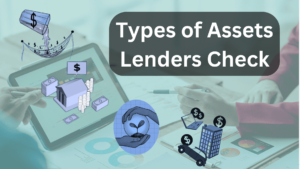VA loans offer veterans flexible home financing. With full entitlement, there are no strict VA loan limits, though lenders assess affordability. Partial entitlement aligns with FHFA conforming loan limits. Key benefits include no down payment (full entitlement) and no PMI. Lenders consider DTI, credit, and income. Check entitlement status and local market conditions to maximize benefits.
In this in-depth guide, we’ll explore how VA loan limits work, how much you can borrow, and strategies to maximize your loan benefits.
Table of Contents
ToggleWhat is a va Loan Limits?
A VA loan is a mortgage option backed by the U.S. Department of Veterans Affairs (VA) that allows eligible military personnel and veterans to purchase homes with competitive terms. Key benefits include:
- No down payment required (with full entitlement)
- No private mortgage insurance (PMI)
- Competitive interest rates
- Flexible credit requirements
- No prepayment penalties
The VA does not issue the loan directly but guarantees a portion of it, allowing lenders to offer favorable terms.
Understanding VA Loan Limits
The term “VA loan limit” refers to the maximum amount a qualified borrower can obtain without needing a down payment. However, since 2020, the Blue Water Navy Vietnam Veterans Act eliminated VA loan limits for borrowers with full entitlement. That means if you have full VA loan entitlement, there’s technically no cap on how much you can borrow, though lenders may impose their own limits based on factors like income and creditworthiness.
For borrowers with partial entitlement, VA loan limits still apply, which are based on conforming loan limits set by the Federal Housing Finance Agency (FHFA).
VA Loan Entitlement Explained
Your VA loan limits entitlement determines your borrowing power. There are two types:
✔ Full Entitlement:
No loan limit applies. You qualify if:
- You have never used a VA loan before.
- You have repaid a previous VA loan in full and restored entitlement.
- You have had a previous VA loan, but it was foreclosed, and the full amount was repaid.
✔ Partial Entitlement:
Loan limits apply. You have partial entitlement if:
- You have an existing VA loan limits that is not yet paid off.
- You have defaulted on a previous VA loan and some entitlement remains.
With partial entitlement, VA loan limits dictate how much you can borrow without a down payment.
VA Loan Limits for Partial Entitlement
If you have remaining entitlement, VA loan limits align with conforming VA loan limits set by the FHFA. In 2024, the standard conforming loan limit is $766,550 in most areas, but high-cost regions may have higher thresholds, up to $1,149,825 in some counties.
Example of Partial Entitlement Calculation:
If you’re buying in a county where the limit is $766,550 and you still have $200,000 tied up in another VA loan, your remaining entitlement may be lower, requiring a down payment on the new loan.
How to Check VA Loan Limits in Your Area:
- Visit the FHFA website to check conforming loan limits by county.
- Use the VA’s online portal to check your remaining entitlement.
How Lenders Determine Your Borrowing Amount
Even though the VA no longer sets loan limits for those with full entitlement, lenders still assess affordability based on factors such as:
- Debt-to-Income (DTI) Ratio: Generally capped at 41%, but lenders may allow higher ratios with strong compensating factors.
- Credit Score: While VA loans don’t have a strict minimum, most lenders prefer a 620+ credit score.
- Residual Income: VA loans require sufficient income left over after major expenses to ensure financial stability.
- Employment and Income Stability: Lenders assess job history and income consistency to determine borrowing capacity.
Comparing VA Loans to Conventional Loans
Feature |
VA Loan |
Conventional Loan |
| Down Payment | None (with full entitlement) | Typically 3-20% |
| PMI Required? | No | Yes, if <20% down |
| Loan Limit | None (full entitlement) | Yes, based on FHFA limits |
| Credit Score Requirement | Flexible | Usually 620+ |
| Debt-to-Income Ratio | Higher allowance | Stricter limits |
A VA loan is generally the best option for eligible borrowers due to its flexible terms and lack of PMI.
Strategies for Maximizing Your VA Loan Benefits
✔ Check Your Entitlement Status: Use the VA’s online portal to verify if you have full or partial entitlement.
✔ Understand Your Local Market: Research home prices in your target area to determine if additional funding is needed.
✔ Improve Your Credit Score: A higher score can help secure better interest rates.
✔ Work with VA-Specialized Lenders: Some lenders offer better terms for VA borrowers.
✔ Consider a Jumbo VA Loan: If you’re buying in a high-cost area, you may still qualify for a large loan with competitive terms.
✔ Apply for Entitlement Restoration: If you’ve fully repaid a previous VA loan, apply to have your entitlement restored for future use.
Conclusion
VA loans provide a unique opportunity for military members and veterans to secure home financing with flexible terms. While there are no longer hard loan limits for borrowers with full entitlement, understanding how entitlement and lender guidelines impact borrowing power is essential.
By taking the time to understand VA loan limits and strategies for maximizing your benefits, you can make the most of this powerful home financing tool. If you’re ready to explore your VA loan options, use our interactive tools or consult a VA-specialized lender today!
FAQs
1. Can I get multiple VA loans at the same time?
Yes, if you have remaining entitlement, you may be able to secure a second VA loan for another property.
2. What happens if I exceed the VA loan limit?
If you have partial entitlement and exceed the loan limit, you may need to make a down payment.
3. Do VA loan limits apply to refinancing?
VA loan limits may apply if you’re using a VA-backed refinance and have partial entitlement.

